Get ready to embark on an adventurous journey as you dive into the enthralling experience of wild camping in Norfolk, a treasure trove of natural beauty.
Home to quaint villages, buzzing forests, a rugged coastline and gorgeous beaches, Norfolk is one of Britain’s most picturesque counties. The best – although not the easiest – way to experience this instant heart-stealer of a region and its natural wonders is by wild camping.
In this guide, I’ll look at several fantastic wild campgrounds in Norfolk. Most of these are situated next to the sea, on the spectacular Norfolk Coastal Path, but there are also some woodland spots and one campsite offering a back-to-basics camping experience.
Is Wild Camping Legal in Norfolk?
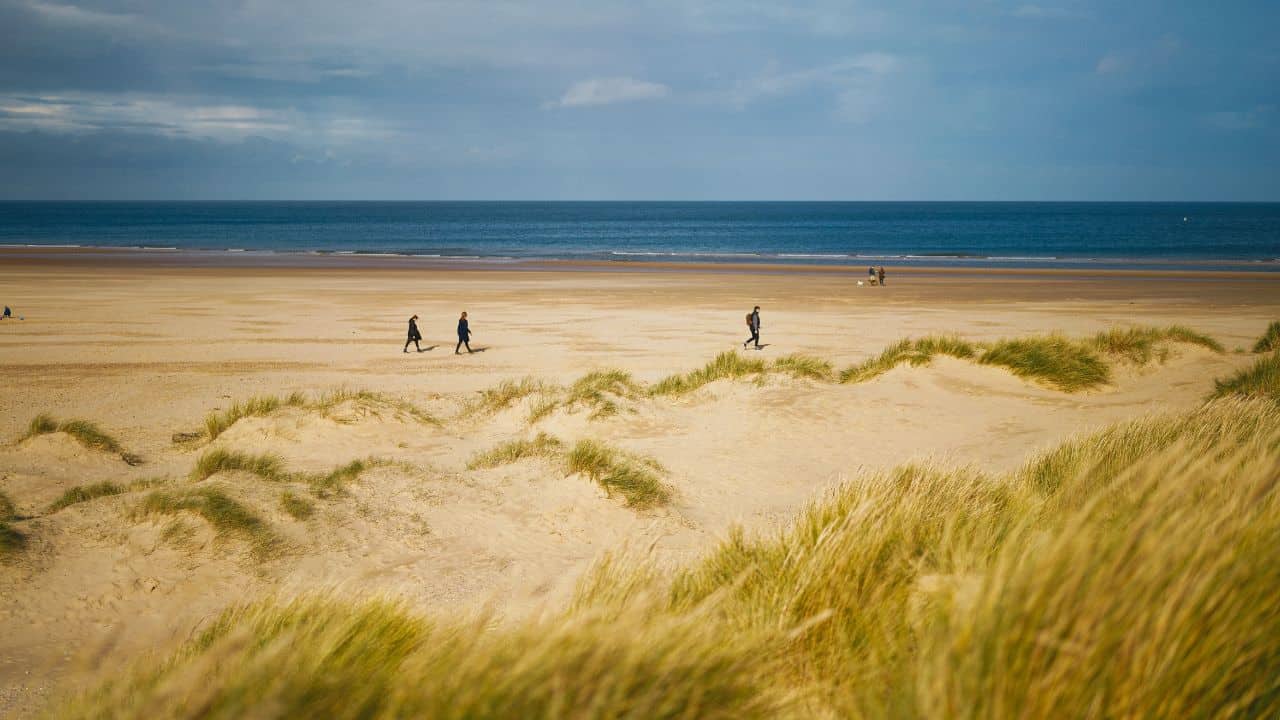
You are allowed to wild camp if Norfolk if you obtain the landowner’s permission, a task that often proves difficult. But as long as you are not a nuisance to anybody, you won’t get in trouble if you wild camp without explicit permission from the landowner.
The best advice I can give you is to use Google Maps satellite imagery to search for coastal or woodland areas away from farms, villages, and towns. Wherever you choose to camp, make sure to pitch late, depart early, and leave no trace – those are the golden rules of wild camping anywhere in the UK.
Map of Wild Camping Areas in Norfolk
You can easily find the locations of the best wild campsites in the state using this map.
Best Wild Camping Spots in Norfolk
Salthouse

Stretching from the dunes at Winterton in the east to Wash in the west and covering over 450 km2 of agricultural and coastal land, the Norfolk Coast AONB (Area of Outstanding Natural Beauty) is a breathtaking region of extraordinary diversity, beauty, and scientific importance. This wonderful landscape offers beautiful beaches, incredible wildlife, and genuinely stunning views. As such, it’s an ideal destination for any wild camper.
One of the rare places where you can pitch your tent without having to seek the landowner’s permission can be found near Salthouse. This lovely coastal village is nestled between a salt marsh and a high ridge in north Norfolk, 24 miles northwest of Norwich. The Domesday Book of 1086 says that this was the site of a “House for the storing of salt”, which is how the settlement eventually got its name.
Near this small group of houses is a road leading to a charming pebble beach. However, before arriving at the beach, you’ll want to turn left and go to the spot marked on the map – a handful of firm mounds covered in grass. Pick the largest one, pitch your tent, and enjoy unforgettable views in all four directions.
One thing you absolutely must do while camping in the area is take a stroll along Salthouse Beach. It stretches for miles and is very peaceful, thanks to the fact that it’s mostly undiscovered by tourists. Grabbing a snack and a drink at Dun Cow in Salthouse is also a good idea – the staff are very attentive, the meals are delicious, and there’s a good selection of local beers on tap.
Burnham Overy Staithe
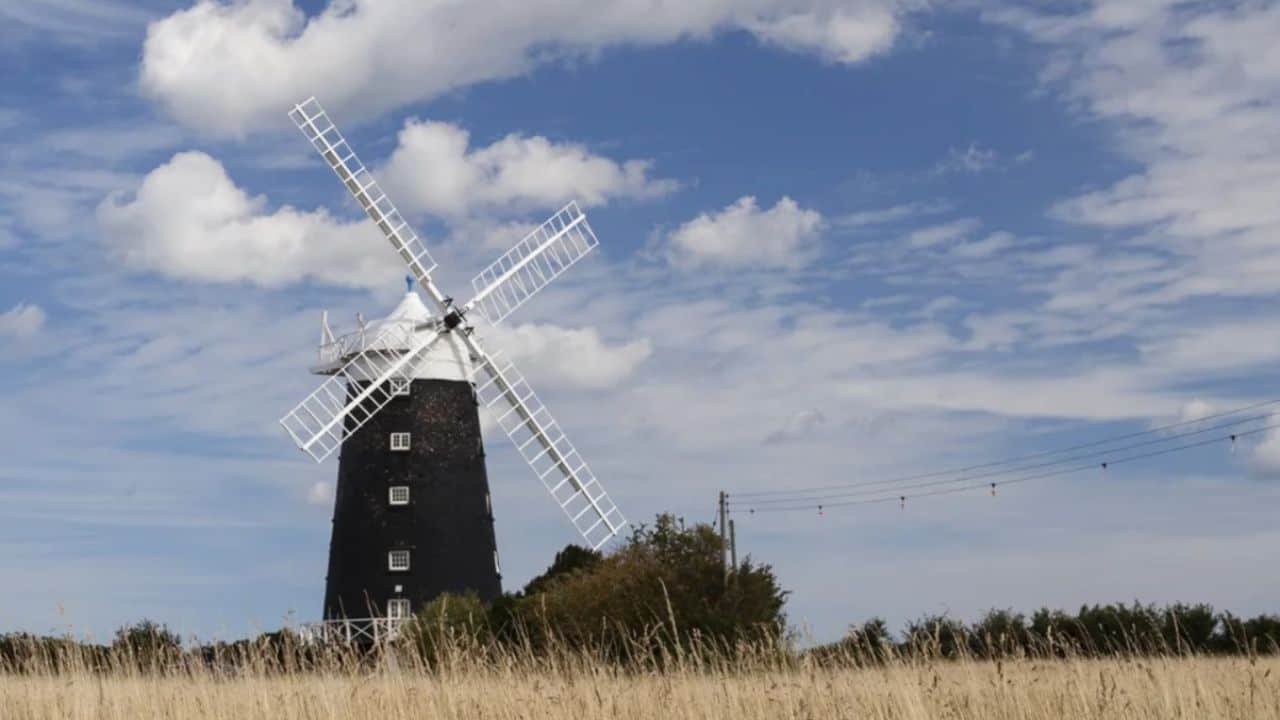
The next Norfolk wild camping destination is situated some 14 miles west of the one described above and is very similar. Therefore, I recommend staying at both places in one longer Norfolk Coast wild camping adventure. To get here, you only need to drive west along A149 until you reach Burnham Overy Staithe, another quaint coastal village.
Once at the village, you’ll want to head north via a mile-and-a-half pathway that connects Burnham Overy Staithe with the beach. The route goes through a beautiful marshland teeming with starlings and other wildlife. You’ll have to climb over giant dunes at the end of the track, but it’s worth the effort – you’ll encounter one of Norfolk’s most unspoilt beaches, whose golden sand stretches for miles.
The best thing about camping here is that there are never too many people around – you’ll never have to worry about “getting caught”. In addition, almost no one comes here (at least to the spot marked on the map, that is) at night, which is not surprising, seeing how the nearest inhabited house is a mile and a half away. Still, pack up early and leave your camping spot in the same condition you found it, just to be sure.
Besides having a tasty dessert at the Hero in Burnham Overy Staithe, I recommend heading further south to a genuinely unique 17th-century Norfolk village of Burnham Market. It’s the perfect place to dine, shop, or enjoy a traditional village atmosphere. The nearby Holkham National Nature Reserve is also worth a visit – it’s one of the tidiest parks in this part of Norfolk.
Norfolk’s coastal charm is undeniably captivating, but for those who’ve traversed its beaches and want a change of scenery, there’s another gem worth considering. Nestled between rolling hills and quiet riverbanks, the River Avon offers a contrasting experience with its verdant landscapes and historic allure. It’s a gentle reminder that England’s wild camping spots are as varied as they are beautiful, with each region offering its unique enchantment.
Trimingham Cliffs
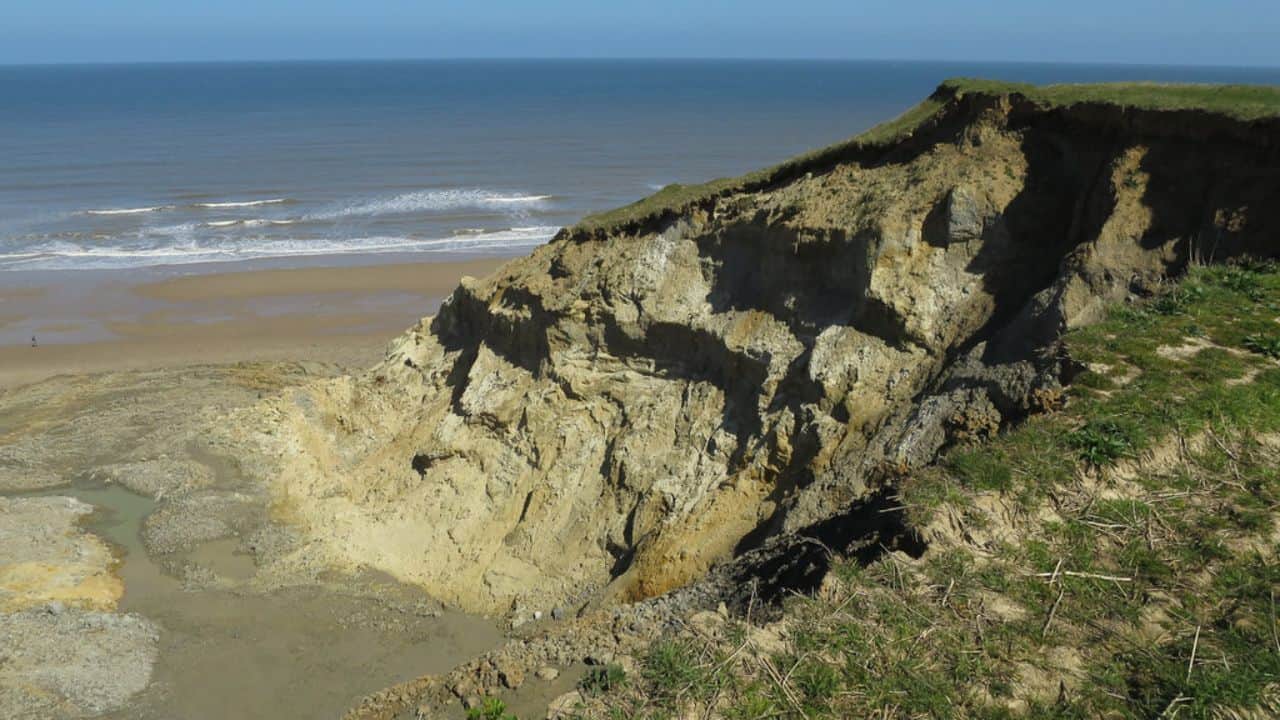
Situated 4 miles southeast of Cromer, the Trimingham Cliffs are the highest in Norfolk. As such, they provide unrivalled sea views and are an excellent destination for wild camping. There is a path atop the cliffs running parallel to the shore, and camping here won’t get you into any trouble as long as you pitch late and leave early.
The easiest way to reach the path atop the cliffs is from the small village of Trimingham. Once you’ve arrived there, you’ll want to head straight to Trimingham Hall and walk the path that crosses the field immediately northeast of the hall on the other side of Cromer Road. The route will take you to a small woodland, yet another excellent wild camping area.
Once you exit the forest on the other side, you’ll see another path winding its way up the hill. Go up the route – it’s a bit of a climb, but the effort is worth it. Try to find a suitable (this means secluded!) spot somewhere along the path parallel to the shore atop the cliffs and pitch your tent. The view you will have from up here will be nothing short of breathtaking.
The Trimmingham Cliffs are close to several coastal villages worth visiting. The Victorian village of Mundesley is just to the southeast – an excellent starting point for several fabulous countryside/seaside walks. You may also want to check out the wooded valley of Frogshall, which is less than a mile southwest of Trimingham and offers additional wild camping opportunities.
As mesmerizing as the Trimingham Cliffs and Norfolk’s coastal charm may be, imagine expanding your camping horizon to the wild campsites of Northumberland. Venturing further north, you would be greeted with an entirely different, but equally captivating landscape. The expansive Northumberland National Park, studded with historic sites and spectacular vistas, presents an enticing proposition for wild campers seeking a change from the coastal cliffs.
John’s Water
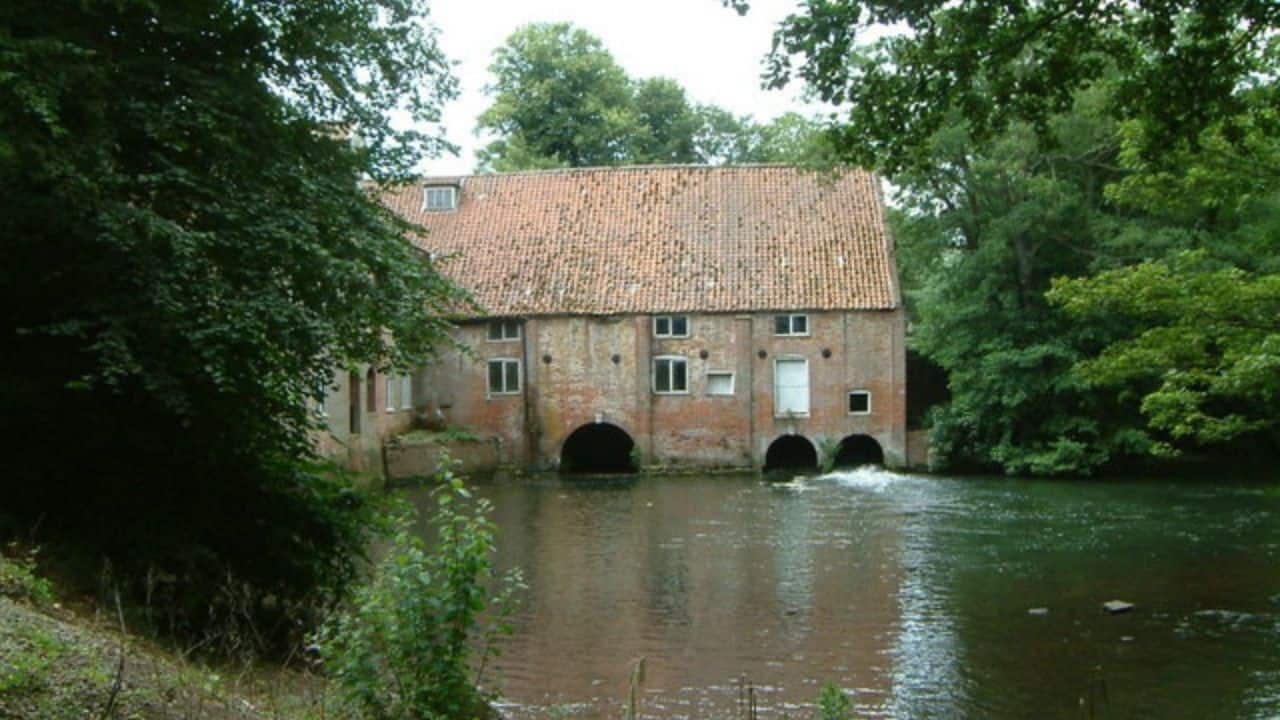
The next on my list of the best wild camping spots in Norfolk is John’s Water, a local bathing place 3 miles northwest of Aylsham. The easiest way to get here is by following Cromer Road north from Aylsham, turning left at the first junction, and then driving west past Blickling Park Farm until you reach Mill Farm Barn, which is right next to John’s Water.
John’s Water is a deep pool with a shallow entry next to Blicking Mill (not to be confused with the aforementioned Mill Farm Barn, which is a bit further south). It’s a popular bathing place in the summer, with some folks jumping into the water from the nearby bridge. There are even a few parking spaces right next to the mill.
However, what will interest you here as a wild camper is a wooded area on the other side of River Bure (which flows underneath the said bridge). It stretches far to the east and features many excellent wild camping spots. The landowner is very relaxed about people wild camping in the forest, but you should still ask around and obtain permission if possible.
Blickling Hall is a must-visit attraction in the area, located halfway between Aylsham and John’s Water. The Hall is a magnificent historic mansion with stunning gardens, a walking/cycling park, and a vast lake. As for the town of Aylsham, you’ll want to check out its many tea rooms, pubs, and shops and its picturesque marketplace that holds markets on Fridays and Mondays.
For an enticing twist on your wild camping adventure, consider trading the peaceful woodland of John’s Water for the thrilling campgrounds of Exmoor National Park. Situated in the heart of southwest England, Exmoor offers an exhilarating journey through its diverse landscapes – from atmospheric moorlands to secluded valleys and stunning sea cliffs.
Alby Wild Camping
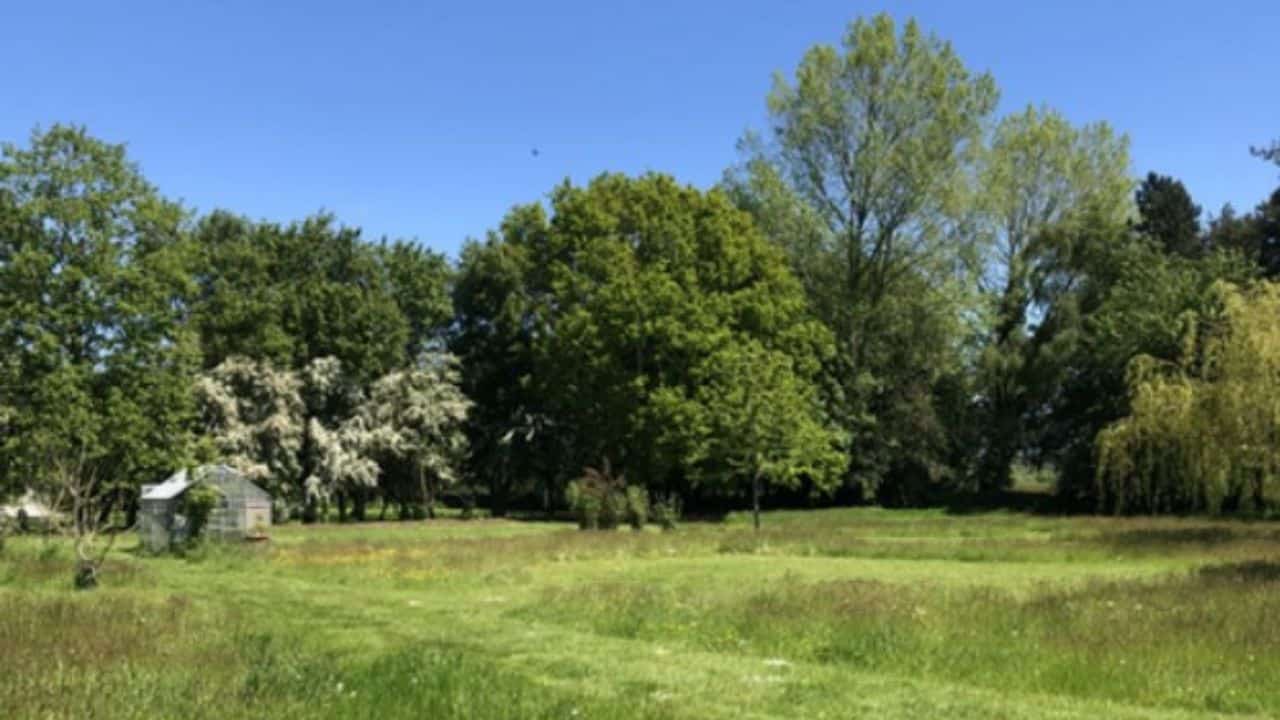
While not a “real” wild camping location, this place is the very antithesis of a regular, developed campground. Located halfway between Cromer and Aylsham, Alby Wild Camping is a relatively new (opened in 2021) campsite that provides visitors with a genuine back-to-basics camping experience in the middle of scenic Norfolk countryside.
This place has a very intimate feel because trees and shrubs parcel it in the acreage behind a Victorian manor house. In addition, only tents are allowed here, and there are just 20 tent pitches in total. Throw in the fact that most people camping here are young families, the fact that the whole place is shared with chickens (kids are allowed to collect eggs), that campfires are welcome, and you quickly get the picture: this is traditional camping in every sense of that term.
To get to Alby Wild Camping from Norwich, follow Holt Road northwards and switch to A140 right after leaving the city. Keep driving north as the road passes Aylsham, and you’ll see the campsite on your right-hand side immediately after passing Erpingham. The fact that the campground is very close to the road is its only drawback – occasional vehicle noise is unavoidable.
However, the campsite’s proximity to A140 also gives visitors easy access to many of Norfolk’s natural wonders. Those staying here will be very close to Blickling and Felbrigg, two of the county’s best National Trust Estates. Moreover, it takes only a 10-minute drive to reach Cromer and its magnificent beach.
Thetford Forest
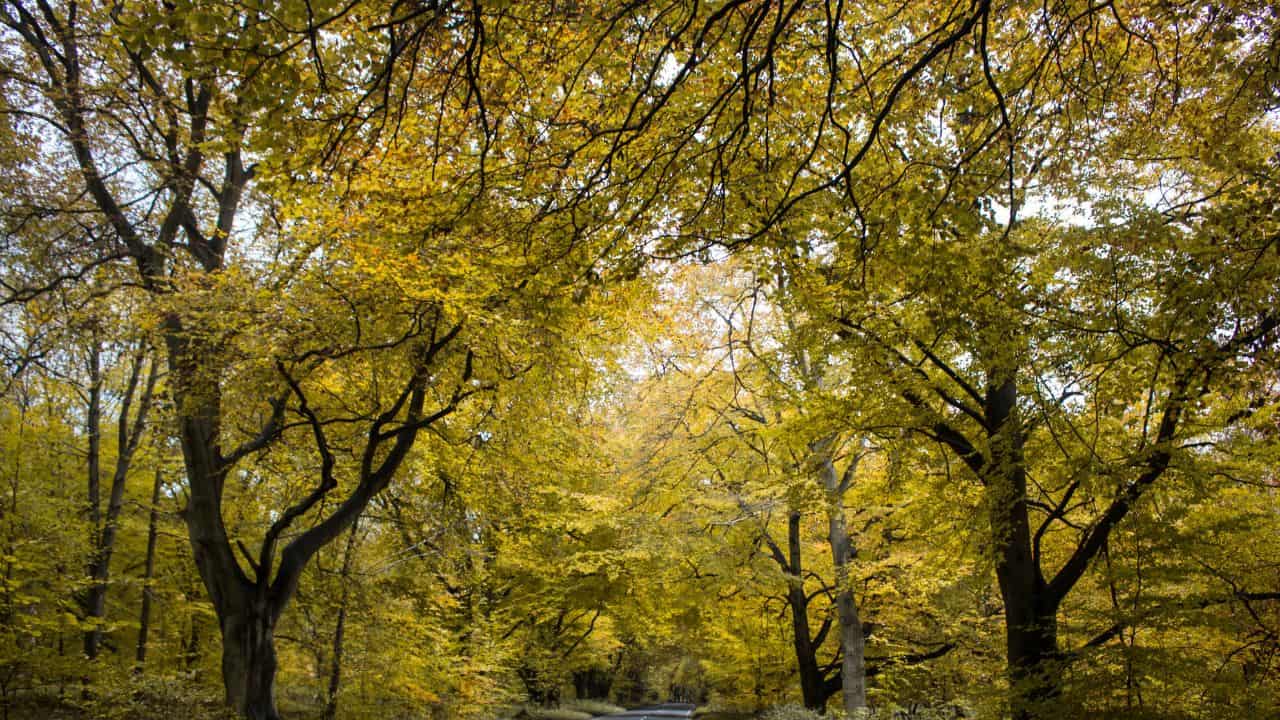
Located in a region straddling the south of Norfolk and the north of Suffolk, Thetford Forest is the largest lowland pine woodland in the United Kingdom. Despite its ancient appearance, the forest was planted relatively recently – right after the First World War, to provide the country with a strategic timber reserve. Today, the forest is a designated area of particular scientific interest.
The best thing about this woodland is undoubtedly its size: Thetford Forest is huge. Its northern section – the one located in Norfolk – covers tens of thousands of acres of land, so finding a quiet little corner for wild camping is never an issue. All you need to do is pitch your tent well away from the paths, and you’ll have no trouble with the wardens. Just prepare for the overwhelming darkness that accompanies sleeping in a dense forest!
On the bright side, you will have a fantastic playground for trekking, cycling, or just enjoying a picnic. Thetford Forest is a particularly excellent destination for wild campers interested in birdwatching. It’s one of England’s only places where it’s still possible to observe (very shy) golden pheasants. Other birds you can see here include grey shrikes, crossbills, siskins, goshawks, stone curlews, and sparrow hawks.
The best place you can visit while camping here is in the heart of the woodland – High Lodge Forest Centre. Here, you will find an ice cream parlour, a pantry, a café, and a restaurant. The nearby market towns of Thetford and Brandon and their historical buildings are also worth exploring.
While Thetford Forest is indeed an outstanding destination, the Peak District offers a splendid alternative for those seeking variety. A completely different experience, the Peak District is a sublime blend of rugged hills, dramatic cliffs, and vast moorlands, which contrasts sharply with Thetford’s dense woodland.
Happy Valley
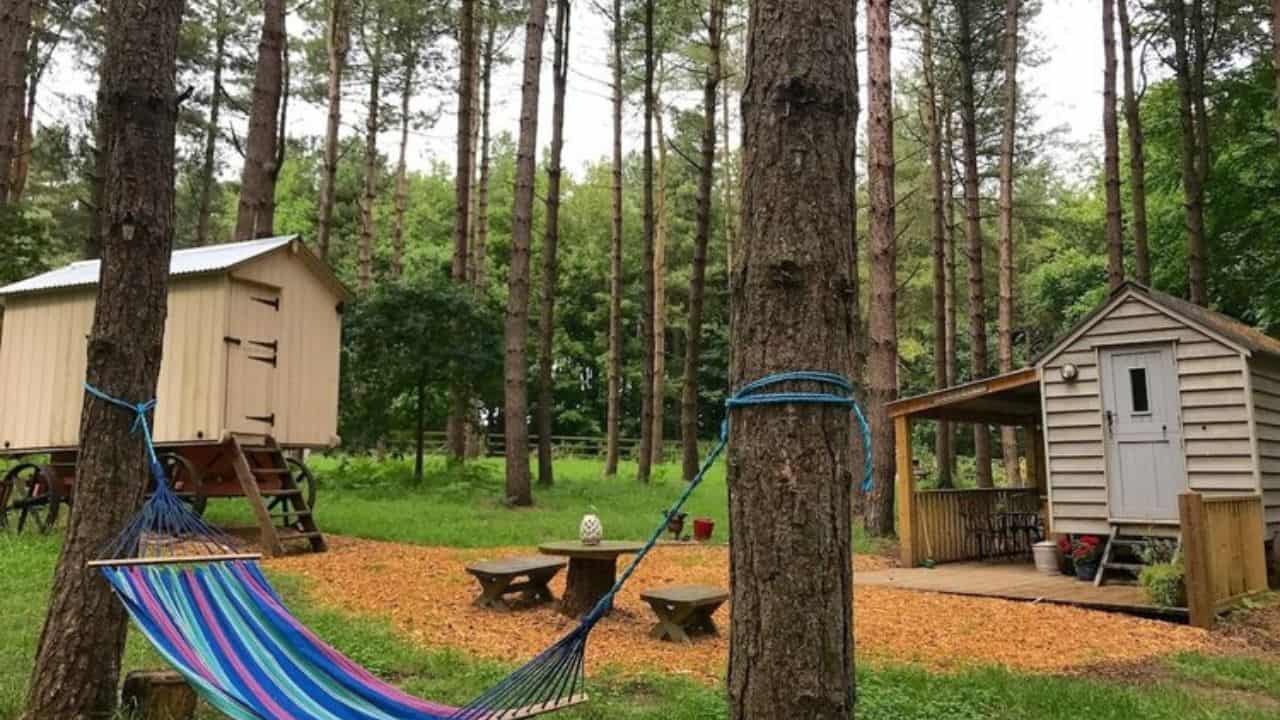
Some wild campers like enjoying their favourite activity while being close to civilisation. If you’re one of them, the following location is tailor-made for you – Happy Valley. Surrounded by streets and houses on three sides and the sea to the north, this is a lush, green area located between the town of Cromer and the village of Overstrand. It is about 1 mile long, stretching from Cromer Lighthouse in the west to Overstrand Beach in the east.
Here, you will want to pitch your tent in the most secluded spot you can find (these are pretty easy to locate in the “valley’s” eastern part, towards Overstrand). Don’t expect complete peace, though – after all, this area is nestled between two settlements. Dog walkers will likely pass by in the morning, but they won’t bother you.
Besides being close to shops and restaurants, one particularly good thing about wild camping here is that you’ll be next to Overstrand Cliffs and the beach behind them. In other words, you’ll be minutes away from genuinely breathtaking sea views. Similarly, it will take you only a few minutes to get down to the beach and have a walk/swim.
There are several points of interest worth visiting in the area. To your west, you’ll have Cromer Lighthouse, built almost two centuries ago. To your east, you’ll have Cliff Top Cafe in Overstrand, which, as its name suggests, provides guests with stunning seaside views. Cromer Esplanade and its Pier Bar are also worth checking out.
The Broads
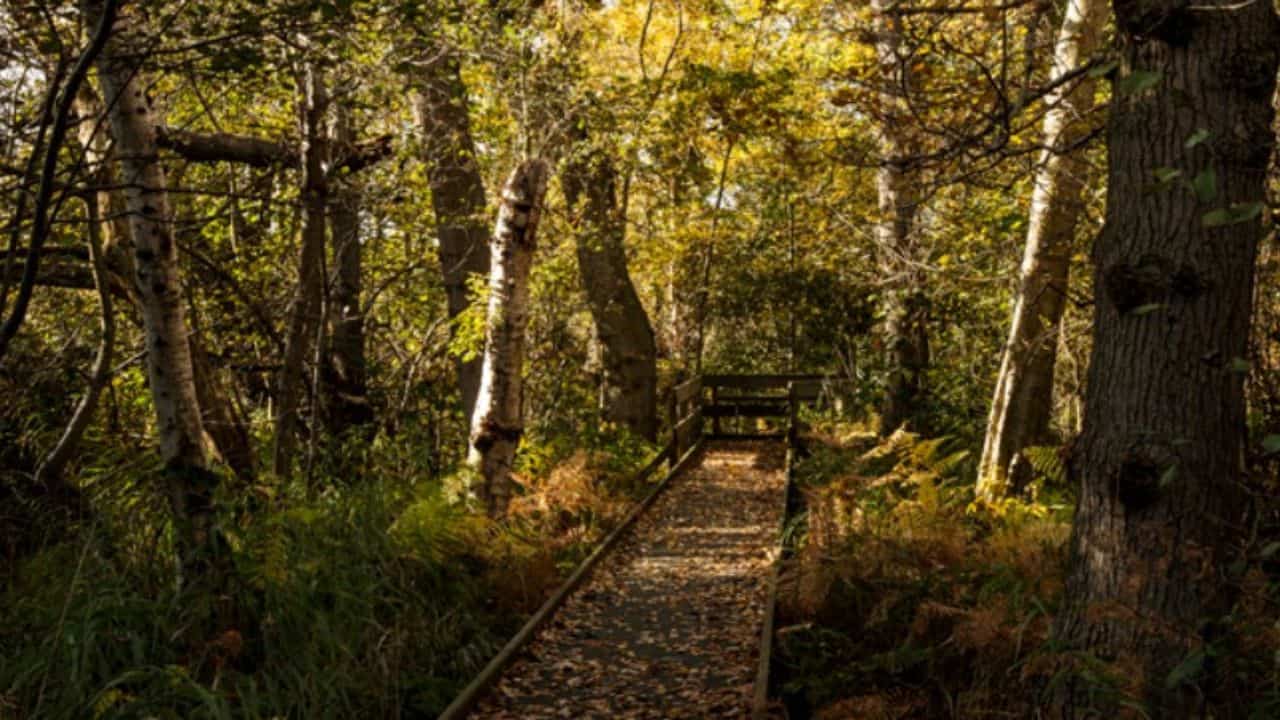
A rich tapestry of wildlife, water, and landscape, woven together by history, the Broads is a place unlike any other in Britain. This is a network of navigable waterways and a protected wetland located west of Great Yarmouth. It draws thousands of tourists annually with its inspiring landscape interspersed with winding rivers and dotted with churches, windmills, and wherries.
However, that doesn’t mean that wild camping here is impossible. In fact, many people camp here during the warmer part of the year, which is also when the Broads are at their most picturesque. You’ll want to set up camp near one of the region’s countless waterways and keep a low profile – use reeds for cover. Remember that this is a very flat region, so you’ll also want to pitch late and leave early to avoid getting spotted.
As Thetford Forest described above, the Broads is a fantastic destination for wild campers interested in wildlife observation. Amongst the species that can be seen here are otters, Swallowtail butterflies, sparrowhawks, cormorants, marsh harriers, Egyptian geese, great crested grebes, moorhens, and many others. A quarter of the species found in the Broads are internationally protected.
While exploring the area, several charming towns and villages are worth checking out, including Acle, Loddon, Reedham, and others. The traditional seaside resort of Great Yarmouth is the biggest settlement in the Broads area, with a great atmosphere, lovely architecture, and stunning beaches.
Where to Next?
Fifty miles north of Norfolk is Yorkshire – England’s largest county and a region abundant with genuinely breathtaking natural scenery. Check out my guide to wild camping in Yorkshire to learn more about the county’s best wild camping spots and how to reach them.

I love hiking, backpacking, and camping. From the Camino de Santiago to the West Highland Way in Scotland or simply a great day hike on the weekend. Hiking refreshes me, my mind, and keeps my body reasonably fit. So far I have walked three Camino routes and many other long distance hikes in the UK, Canada, and around the rest of Europe. One of the best was my hike up Ben Nevis.

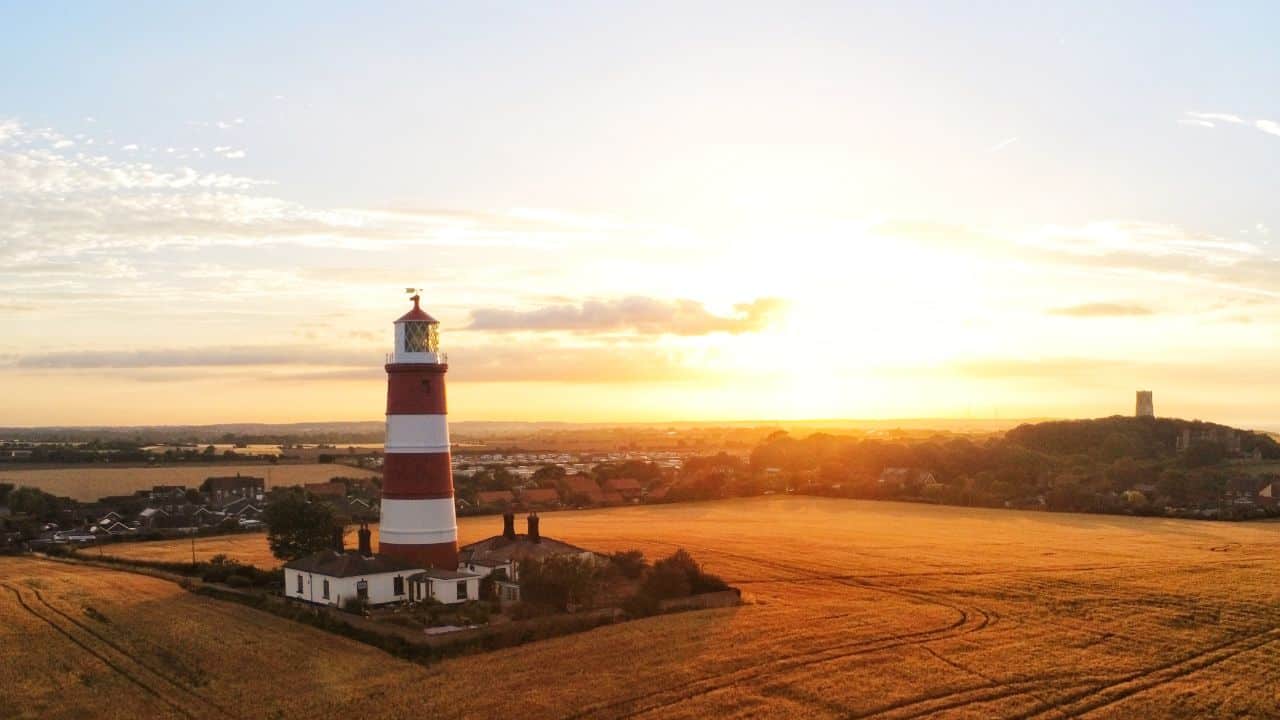
Wild Camping in Norfolk:
Some great suggestions – and I’ve already marked the coastal locations! (‘Happy Valley appears to be one of the the fairways on Cromer Golf Course and those golfers can be there early – but something nearby!)
Love the message that ‘wild’ camping is accessible and available to anyone. There are no pushes on equipment, etc.
I refer to my style as ‘quiet camping’ – or more accurately, ‘Camping’. Its not ‘wild’, its wherever I can find a spot that I can put my shelter up without bothering anyone.
It’s good to see an interest in areas awy from the pressures on the National Parks. (Broads is not a National Park but two competing interest, ego and £s)
Hi just wondering why you don’t need to seek the landowners permission at Salhouse?
Fab article, thanks!